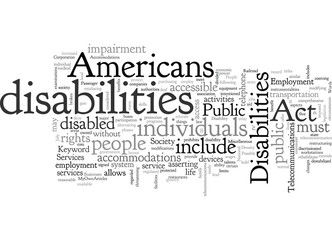
“
The Americans with Disabilities Act (ADA) has been transformational in many ways, especially in the way that people with disabilities can access public spaces and thereby participate in their communities. Nevertheless, a look at the ADA’s impact on its thirtieth birthday reveals much that has not changed. Notably, the needle on unemployment of employable persons with disabilities has scarcely budged. In other areas things are getting worse. WebAim’s survey of the home pages of the one million most popular websites, for example, revealed barriers on 98.1% in 2020, an increased incidence rate from 97.8% in 2019; likewise, the average number of accessibility errors per home page rose to 60.9% in 2020 from 58.8% in 2019.
The time has therefore come to re-assess how to innovatively advance disability rights. Historically, strategic litigation has been the tool of first resort of cause lawyers on behalf of marginalized groups in the U.S. including, at times, people with disabilities. Litigation is an important tool, but one that is expensive, time-consuming, and non-systemic. Because defendants settle the strongest cases, it is hard to build a body of good law, and, for the most part, employment disability rights cases are dependent on the facts around reasonable accommodation that are idiosyncratic and provide relief one plaintiff at a time. Moreover, all too often, entities do not want to comply when the law is clear or even when it is economically in their own self-interests. Part of the problem lies with the stubborn, prevailing cultural perception of “disabled” as “less able,” and a view of accommodation as an imposed burden, rather than a positive opportunity to include those with disabilities. Consequently, the ADA remains a broad mandate that society has not yet fully embraced.
It is time to consider how to move from compliance as an imposition toward desired inclusion and belonging—from a semi-effective external enforcement stick to a more effective self-motivated carrot. From that perspective, current laws are not much help. The ADA, the Rehabilitation Act (Rehab Act), and their accompanying respective regulations elaborate on what covered entities should not do—discriminate, create barriers, and fail to make reasonable accommodations. But apart from the notable exception of the ADA Architectural Guidelines (ADAAG) and the Rehab Act’s508 regulations, governing the accessibility of electronic and information technology applicable to federal governmental entities, there is little in the way of guidance as to the affirmative steps that organizations could take to be inclusive and accessible to customers, employees, and job applicants with disabilities. Not surprisingly, so far the record on the effectiveness of affirmative standards, beyond ADAAG, is not encouraging. Compliance by the federal government with 508, as well as by states that have 508 equivalents, was and is rare. Take, for example, the extensive use of Google Docs before it was accessible; further, use of inaccessible Microsoft SharePoint by governmental entities at all levels was and is endemic.
So, where is the all-in-one answer to what an entity needs to do to be fully inclusive of people with disabilities, be they customers, employees or job applicants?
This article was originally posted in the Harvard Law Review
To read the rest of the article click here.


